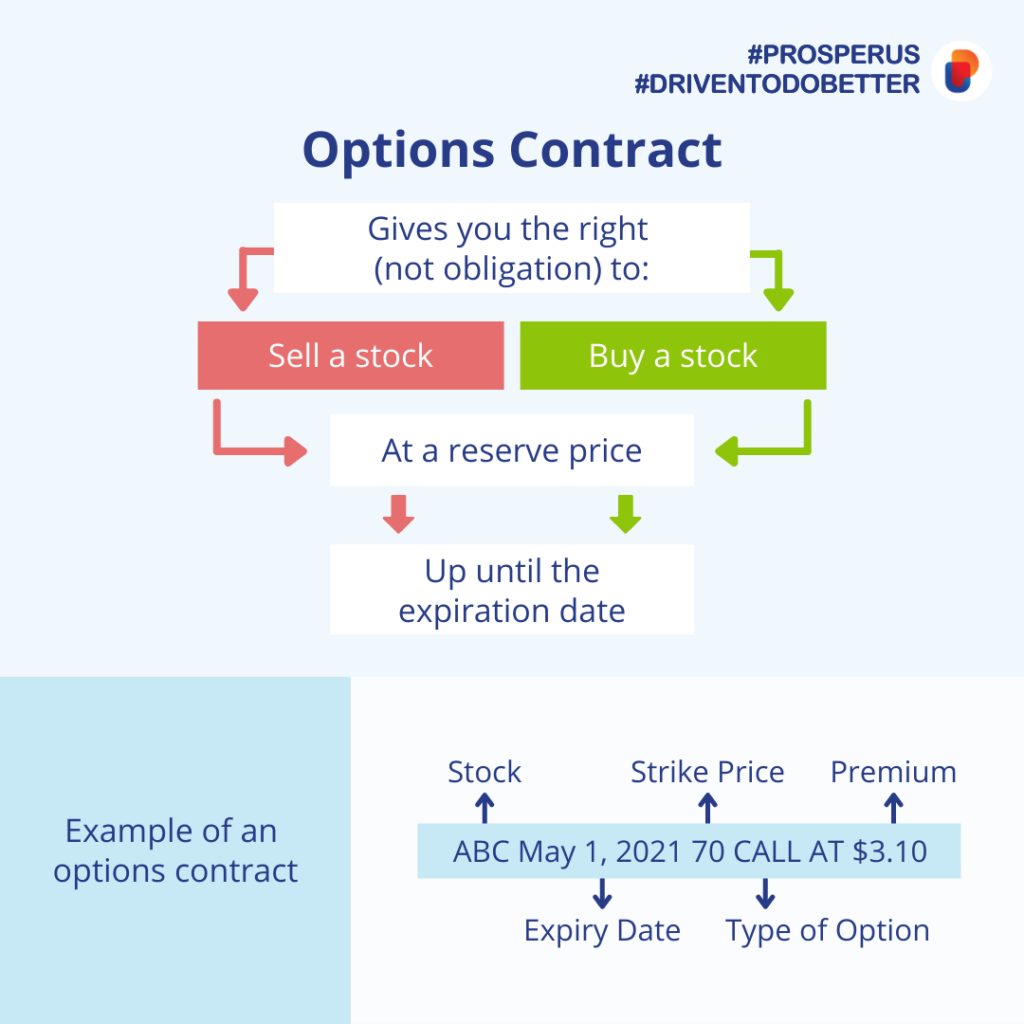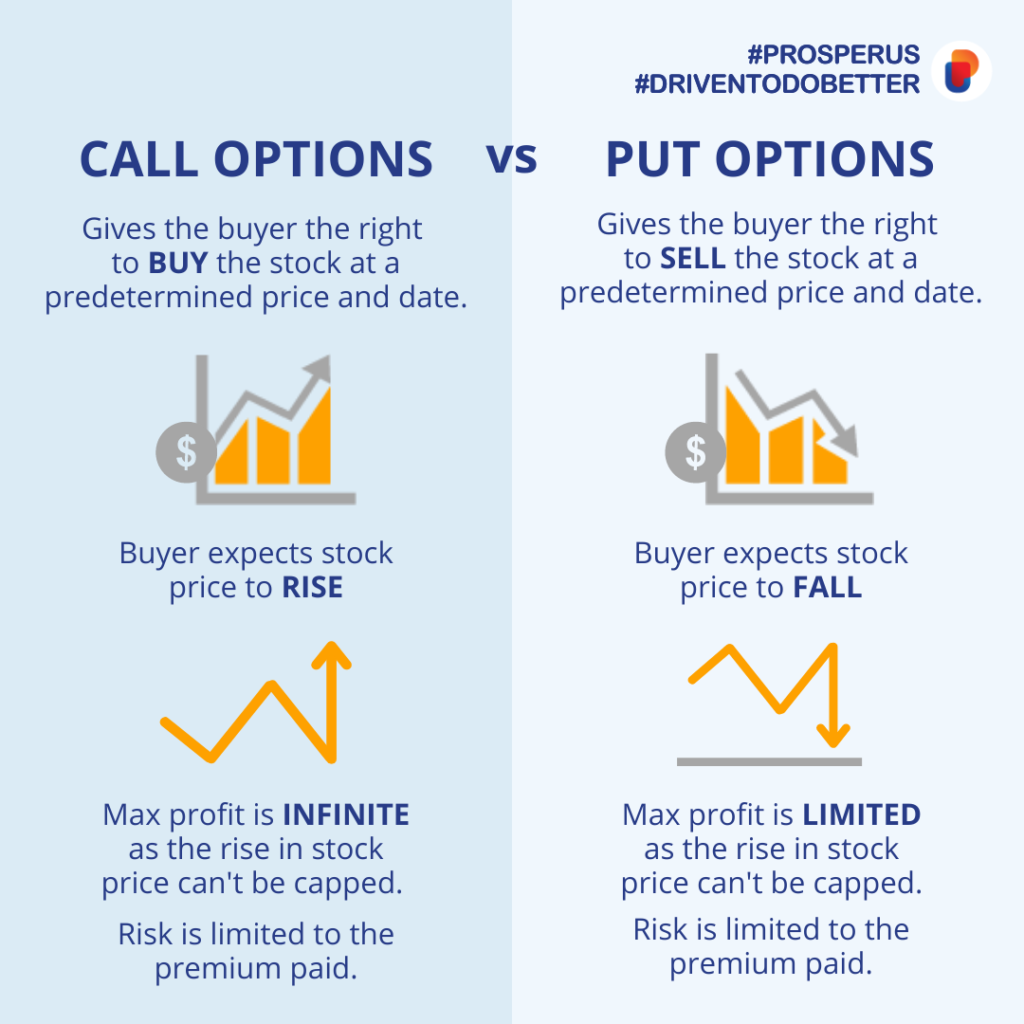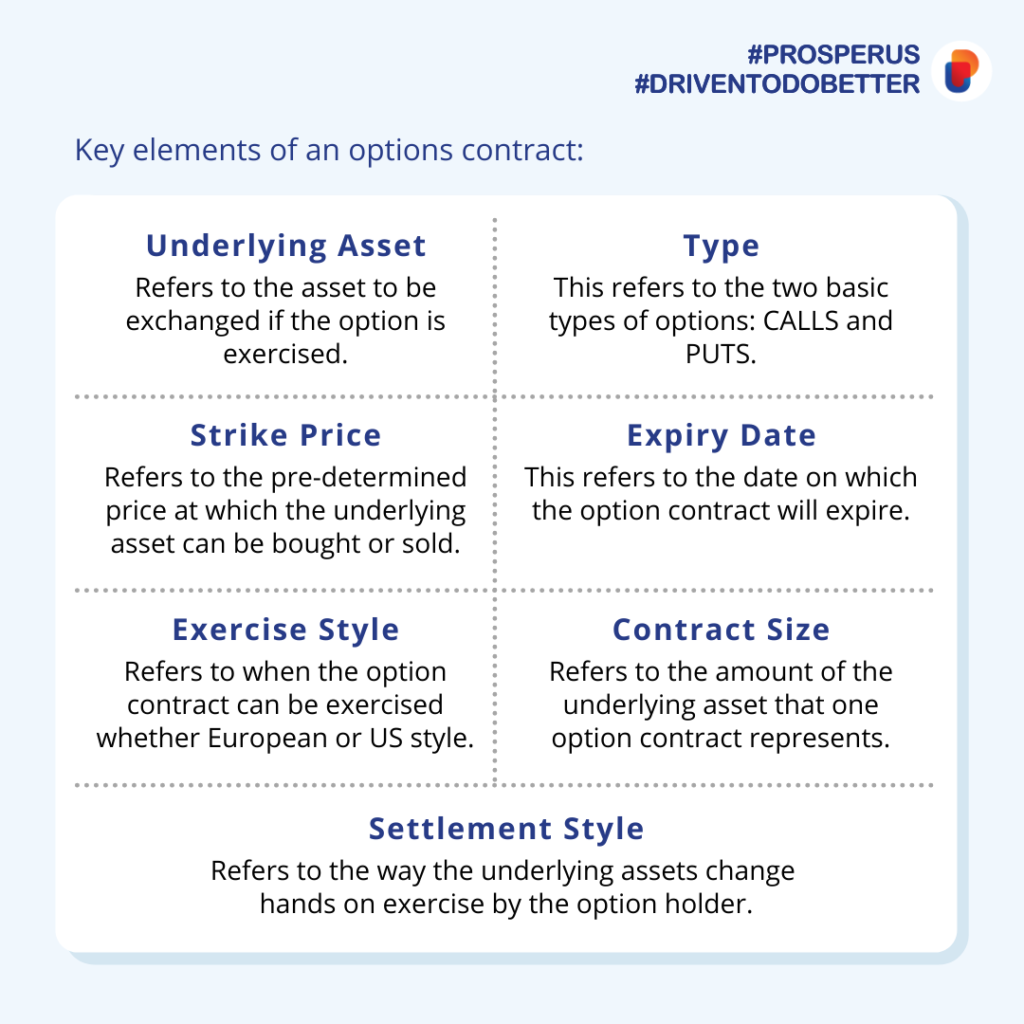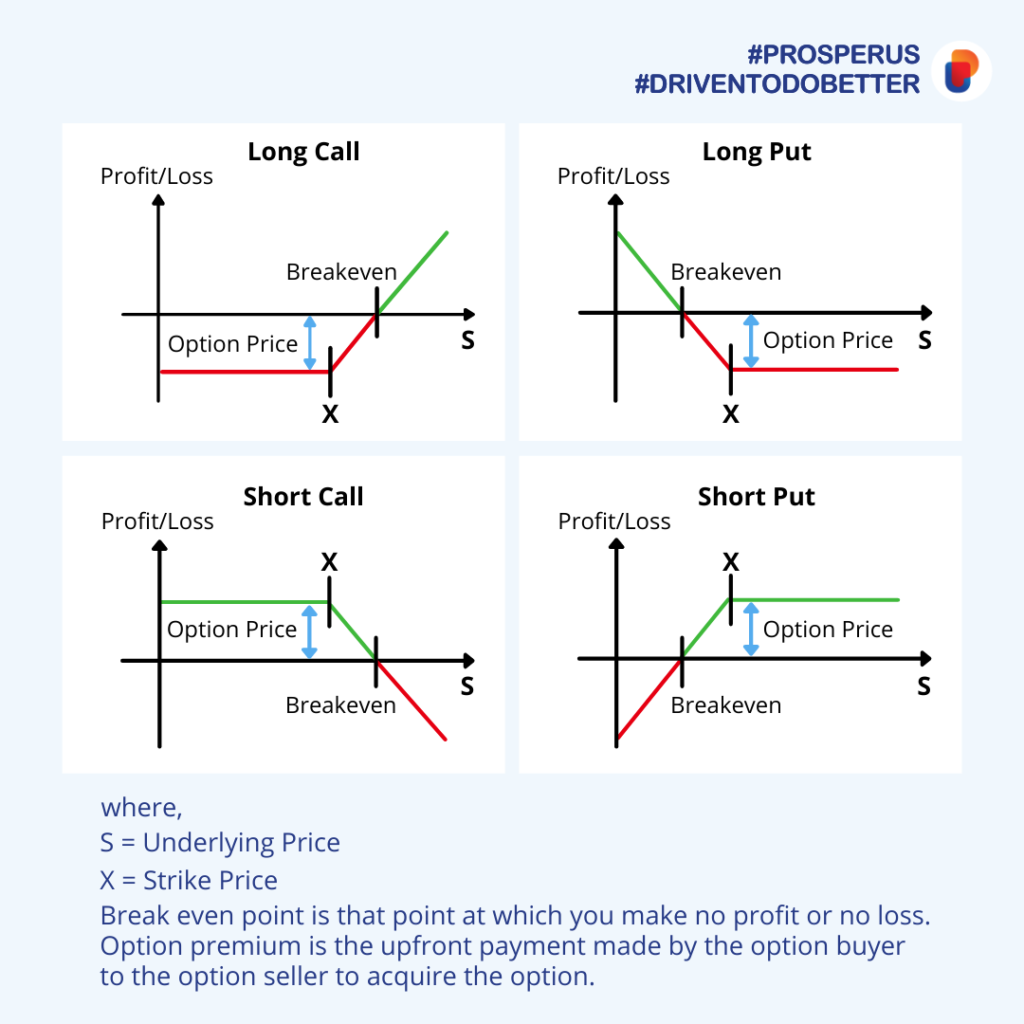Get Started with Options
October 18, 2021

Investing has become more complicated in recent years, with the creation of new derivatives instruments that offer new ways of growing your money. There are many types of derivative instruments and among some of the popular ones are options.
Options are essentially conditional derivative contracts that allow buyers of the contracts (option holders) to buy or sell a security at a chosen price.

A “premium” will be charged to the option buyers by the sellers for such rights. Options are divided into “call” and “put” options.

A call option gives the buyer of the contract the rights to buy the underlying asset in the future at a predetermined price, often referred to as exercise price or strike price.
Meanwhile the put option gives the buyer the right to sell the underlying asset in the future at the predetermined price.

The most popular options involve stocks but options are also available for other asset classes such as indices, bonds, exchange-traded funds (ETFs), commodities and others.
One thing is certain: options are not suitable for beginners but it can be used to complement your investment portfolio if you know what you’re doing.
Below are the basic option strategies for those starting out in the space:

1) Buy or “Long” Call Options
Options are leveraged instruments so investors can amplify the benefits by risking smaller amounts than would otherwise be required if trading with the underlying asset itself. An option contract usually has 100 shares of the underlying security.
A Buy Call option or Long Call option is simply a call option that is betting that the underlying security will go up in value before the expiration date of the contract.
The benefit of employing a buy call option is that it allows you to use a minimum capital exposure to trade a lot of shares of a security rather than putting up the capital to buy a particular share of a security.
2) Buy or “Long” Put Options
A put options works in the exact opposite fashion to how a call option does. The buyer of a put option will gain in profit as the price of the underlying security decreases.
Here is an example of how a put option works. Billy purchases a put option on an underlying security “A” trading at US$15 per share. The put option has a strike price of US$12.
Billy will earn on the put option if the price of A falls below US$12 strike price. The actual gain is dependent on how much Billy needs to pay the premium for the option.
Let’s say the premium is at US$2 per share for the option contract and A falls below US$8 per share. This would translate into a gain of US$12-US$8-US$2 = US$2 per share.
While short-selling also allows a trader to profit from falling prices, the risk with a short position is unlimited as there is theoretically no limit on how high a security’s price can rise.
With a put option, if the underlying security rises past the option’s strike price, the option will simply expire worthless. This puts a cap on the losses for put option buyers.
3) Sell or “Short” Call Options
A short call option, also known as a “naked short call”, is another strategy for investors who are either neutral or bearish on a certain security.
This strategy is quite risky if you’re looking to short the call option for individual stocks but it’s less risky if the option is done on underlying securities such as ETFs, commodities or indices.
In essence, investors who sell or “short” call options have the obligations to sell an underlying security at a specified price.
This means that there is an obligation to cover the position by purchasing shares at the market price.
If the price of the underlying security falls, a short call strategy wins but if the price rises, there’s an unlimited exposure during the length of time the option is viable, thus the name “naked short call”.
An example is if you believe an ETF trading at US$250 per share is overvalued, you might want to consider a call option at, say US$270 per share, above its current market price.
Selling the call option allows you to collect a premium upfront. If the ETF drop to US$200 per share over time, you will profit on the difference (US$250-US$200 = US$50). However, if the ETF continues to gain in value, you will lose value.
While both short call and long put options are similar in a sense that both profit from a decline in value of the underlying security, the strategy works very differently.
By using a long put strategy, you do not earn the premium of the option but would have to pay the premium.
However, if the underlying security were to gain in value, you would only lose the total price of the option. Therefore, a long put option is less risky as compared to a short call option.
4) Covered Call Options
This is one of the most popular option strategies and is an expansion from the previous short call option.
To limit losses for a short call options, some traders will invest in the underlying security, thus the name “Covered Call” options.
A covered call option involves buying shares of the underlying security and selling or shorting a call option against that same underlying security.
When you short the call, you collect the options’ premium, thus lowering the cost basis on the shares and providing some downside protection.
In return, when you short the call option, you agree to sell the shares of the underlying security at the option’s strike price, thereby capping your upside potential.
5) Sell or “Short” Put Options
Selling or “Short” put option allows you to potentially own the underlying security of the option at a future date and at a much more favourable price. When you short the put options, you earn a premium if the put option is not exercised by the expiry date. It can be very attractive if you short put option on securities that you want to own because it would lower the net cost of owning the securities with the premium received.
Options can help hedge risks
Most options are designed to enable investors to better manage risk in their portfolio. It creates alternative strategies for investors to profit besides purely trading with underlying securities.
There’s a variety of strategies involving different combinations of options, underlying assets, and other derivatives. Basic strategies for beginners include buying calls, buying puts, selling covered calls and buying protective puts.
The clear advantages of trading options rather than the underlying securities are the downside protection and leveraged returns.
The disadvantages are that it could be a bit too complex for some investors and it involves upfront premium payments, which may eat into your overall portfolio return.

Billy Toh
Billy is deeply committed to making investment accessible and understandable to everyone, a principle that drives his engagement with the capital markets and his long-term investment strategies. He is currently the Head of Content & Investment Lead for Prosperus and a SGX Academy Trainer. His extensive experience spans roles as an economist at RHB Investment Bank, focusing on the Thailand and Philippines markets, and as a financial journalist at The Edge Malaysia. Additionally, his background includes valuable time spent in an asset management firm. Outside of finance, Billy enjoys meaningful conversations over coffee, keeps fit as a fitness enthusiast, and has a keen interest in technology.







